
Linguistic Map of Languages and Dialects in Europe priority given to dialects and indigenous
Lithuania Luxembourg Netherlands Slovakia Sweden Argentina-European Union relations Armenia-European Union relations Australia-European Union relations Brazil-European Union relations Canada-European Union relations China-European Union relations European Union-NATO relations Georgia-European Union relations Iceland-European Union relations

Linguistic maps of Europe Europe language, Europe map, Map
A detailed map of languages in Europe [5977 x 5255] And in Alsace very very few people (often the elderly) are still speaking alsatian (certainly the upper germanic language the map is talking about) This seems very inaccurate for German. There is a huge difference between Schwitzerdütsch and Bavarian, yet they have the same color.

Linguistic Maps Of Europe Languages Of Europe
Languages of Europe A color-coded map of languages used throughout Europe. There are over 250 languages indigenous to Europe, and most languages of Europe belong to the Indo-European language family. [1] [2] Out of a total European population of 744 million as of 2018, some 94% are native speakers of an Indo-European language.

Most spoken endangered languages in Europe by country. Language map, European map, Geography map
However, the EU, the European union of 28 member states has 24 official languages, but in practice only two are used most often: English and French.
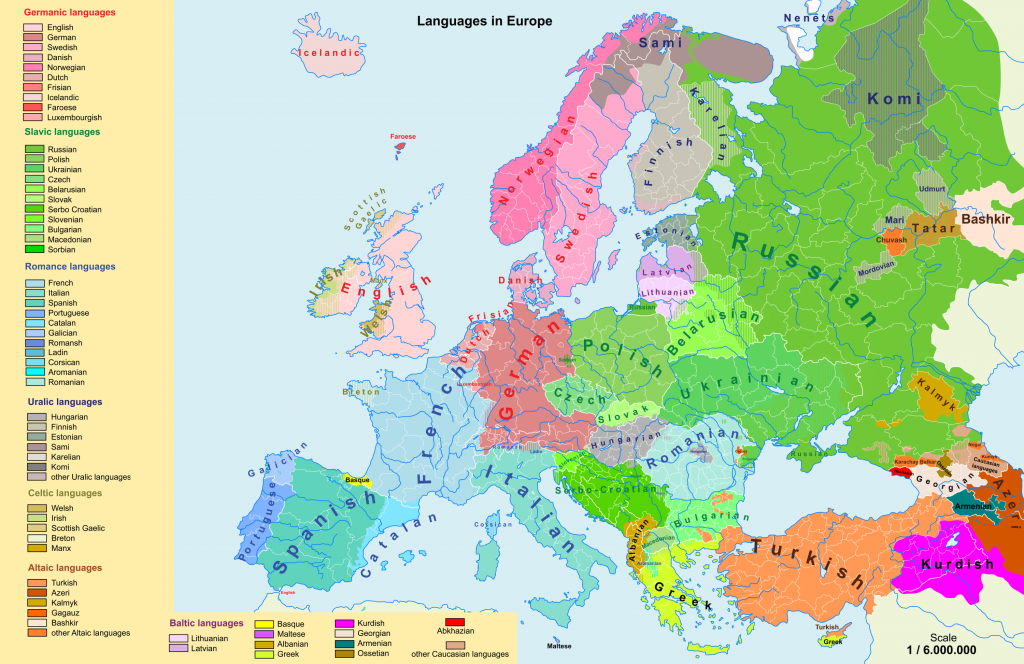
Linguistic Maps Of Europe Languages Of Europe
Below is the map poster of European languages and dialects created by eurominority.eu. The lexical distance among the languages of Europe The map below presents the lexical distance - that is, overall vocabulary difference - between the major languages of Europe. The size of each circle depicts the number of speakers for that language.

a map of europe with different languages on it
Map showing minority/majority languages.Image by jakubmarian.com. Language Families Indo-European It's estimated that 94% of Europeans speak languages from the "Indo-European" (IE) language family, which has many subfamilies, such as Romance languages, Germanic languages, Slavic languages and Celtic languages. The "Indo" part shows that it also has an Eastern branch, indicating.
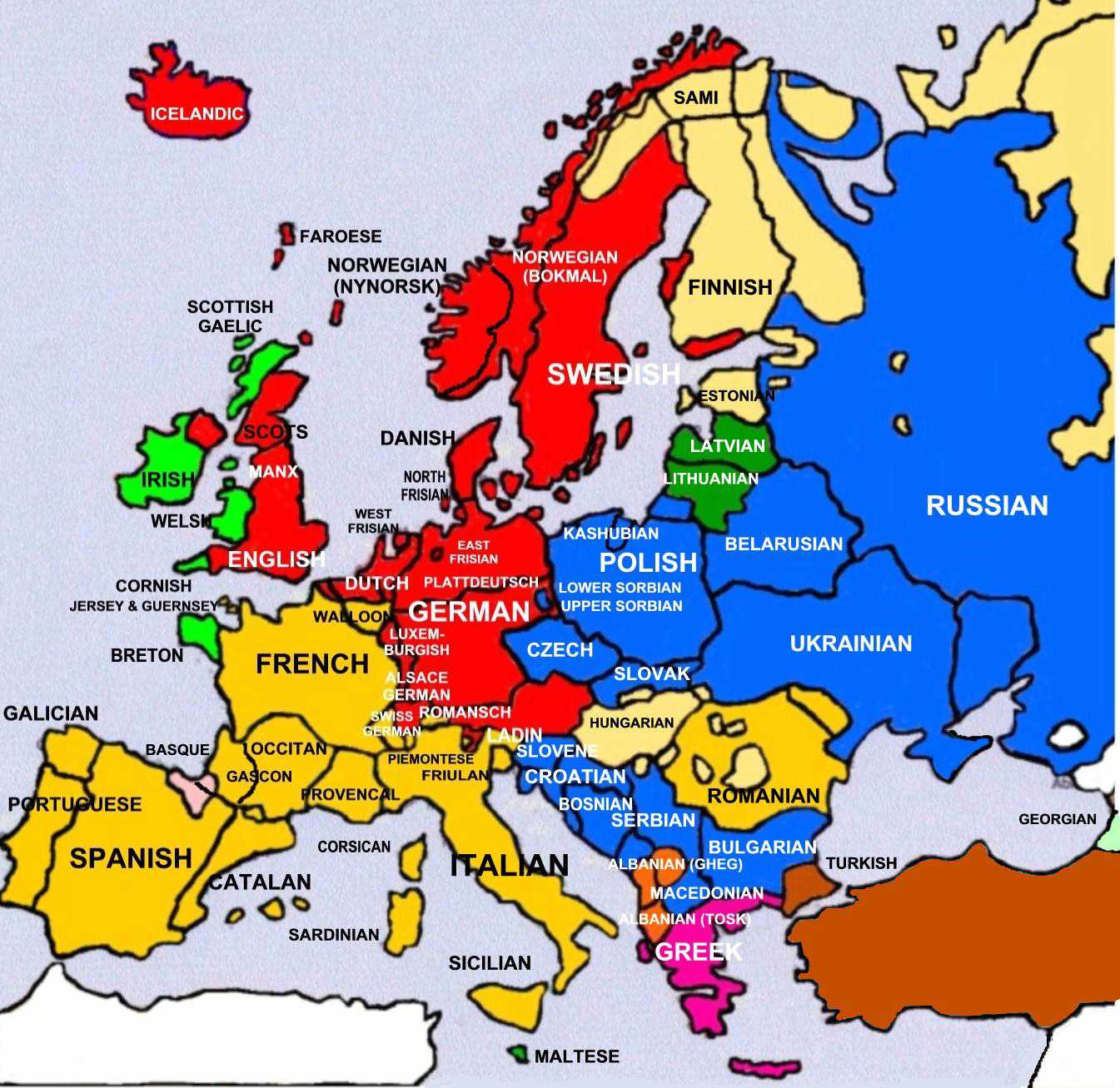
Languages of Europe
Albanian; Finno-Ugric languages: Finnish, Hungarian, Estonian; Baltic languages: Latvian and Lithuanian; Celtic languages: Irish, Breton, Manx, Cornish, Welsh, Scottish Gaellic. Statistics by number of native speakers worldwide (top 5 for each linguistic family): Romance languages Spanish (410 million speakers); Portuguese (250 million speakers);

Map Of Languages Spoken In Europe Draw A Topographic Map
The Slavic branch of the Indo-European language group includes Russian, Ukrainian, Polish, Belarusian, Czech, Bulgarian, Croatian, Serbian, Slovak and more. The most widely spoken of them is Russian, which is the world's eighth most spoken language by native speakers (154 million people speak Russian as their first language).

This Is A Really Fascinating Map. Languages Of Europe Around 600 Ad European History, World
How do words change as we travel across the European continent?. The creator of this interactive James Trimble was inspired by a series of maps showing the etymological links and differences.
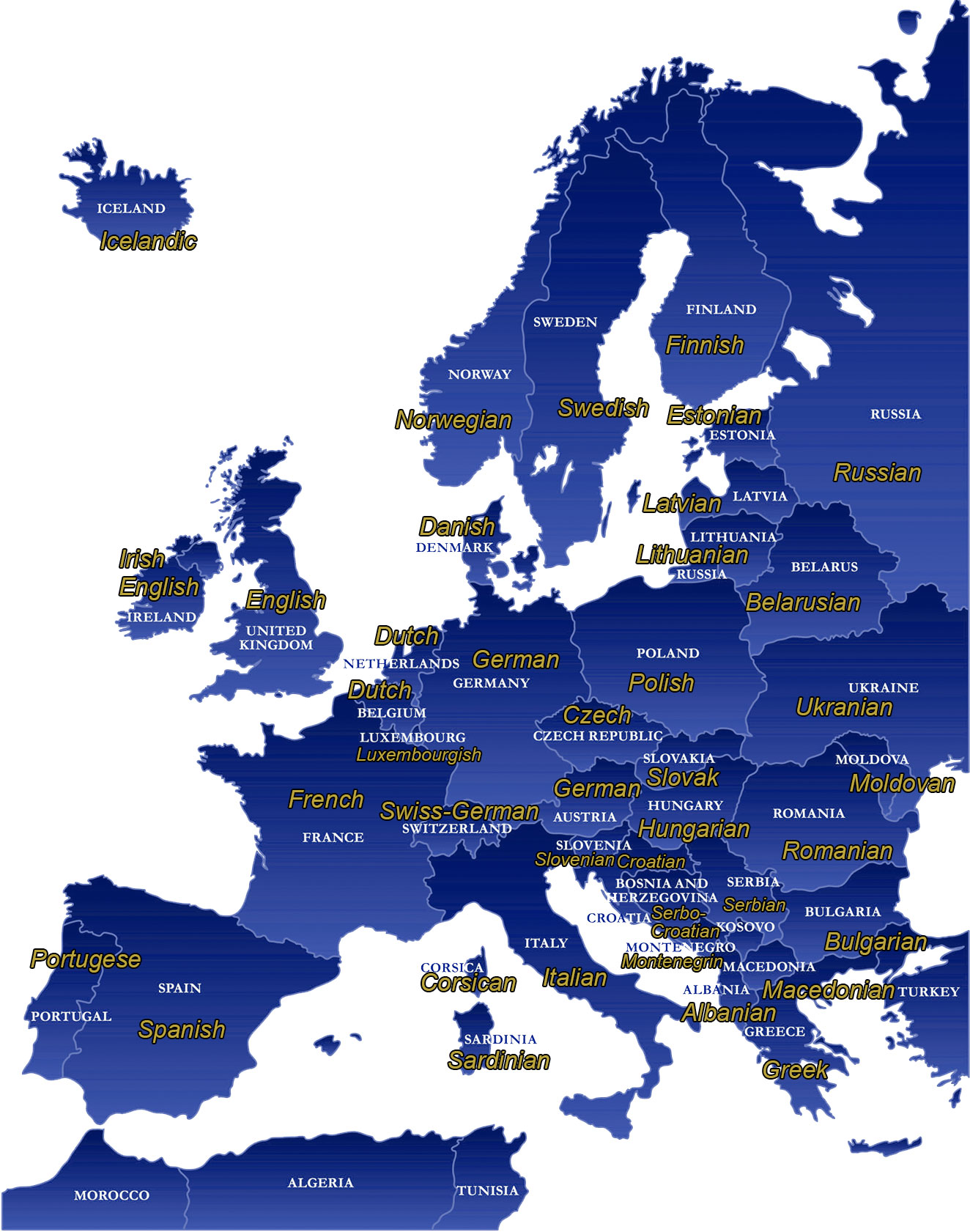
Map of Official Languages of Europe
1. Russian Russian is the most spoken language in Europe, with roughly 160 million native speakers. It's the official language of Russia, Belarus, Kazakhstan, and Kyrgistan, and some other post-soviet countries: Ukraine, Moldova, Latvia, Estonia, Lithuania, Armenia, Azerbaijan, Georgia, Tadjikistan, Uzbekistan.

Linguistic Maps Of Europe Languages Of Europe
Map of languages and language families of Europe by Jakub Marian Tip: See my list of the Most Common Mistakes in English. It will teach you how to avoid mistakes with commas, prepositions, irregular verbs, and much more.

languages in Europe Gamle kart, Kart, Kort
Countries of Europe: Albania · Armenia ‡ · Austria · Azerbaijan ‡ · Belarus · Belgium · Bosnia and Herzegovina · Bulgaria · Croatia · Cyprus ‡ · Czech Republic · Denmark · Estonia · Finland · France ‡ · Georgia ‡ · Germany · Greece · Hungary · Republic of Ireland · Italy · Kazakhstan ‡ · Latvia · Lithuania · Luxembourg · Moldova · Montenegro · N.
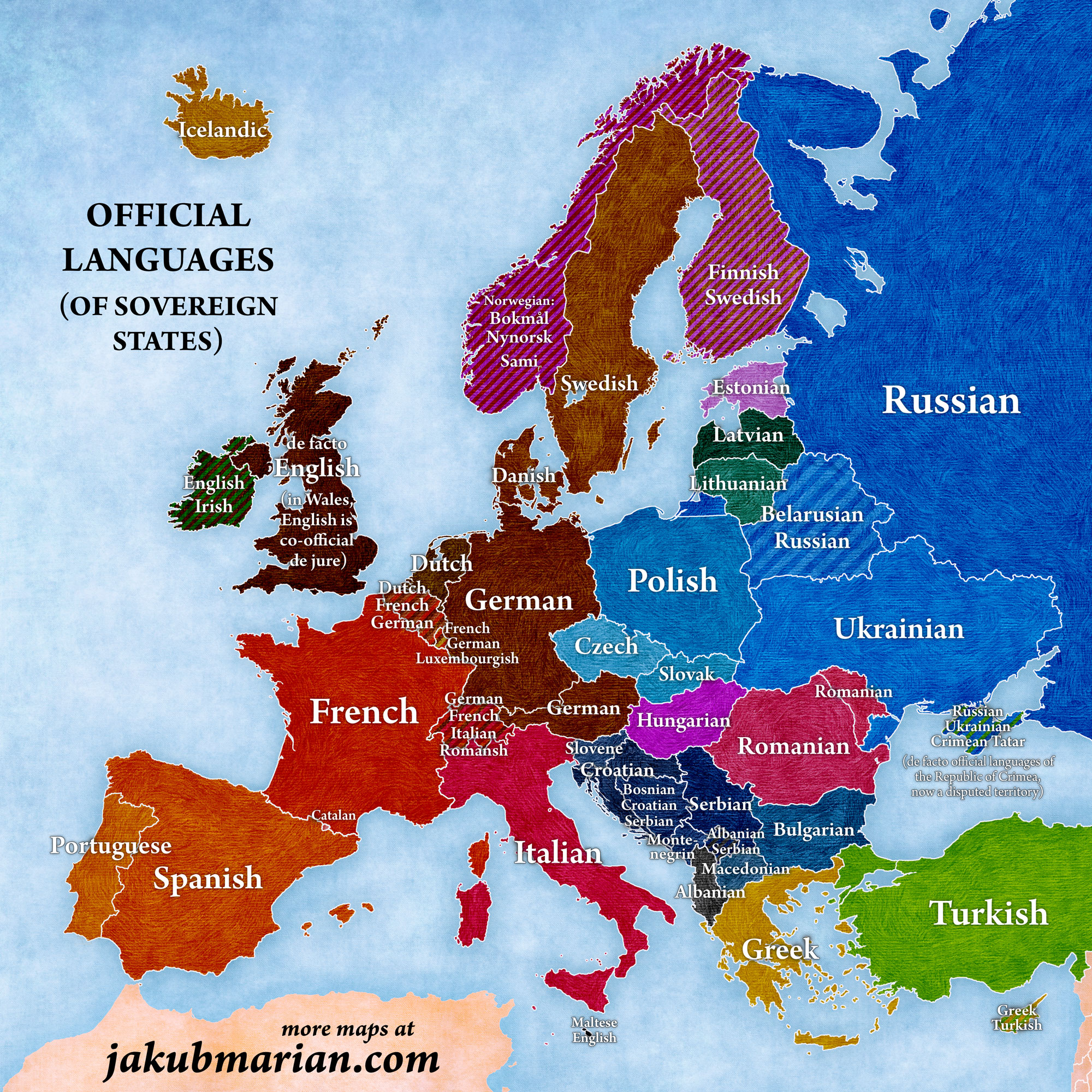
Official languages of European countries
An interactive visualization of languages in Europe by Jonathan Van Parys A visualisation of language knowledge in Europe Home Table of Contents What is languageknowledge.eu ? A selection of mentions Why not visualize the data on a map ? Where does the data come from and how are the statistics computed ? How reliable is the data ? Launch text
European Languages According To The Dutch Brilliant Maps
Finally, on the map of the third most spoken foreign languages, we can see that German is quite popular in most of Europe, and that Romance languages other than French are also moderately popular.
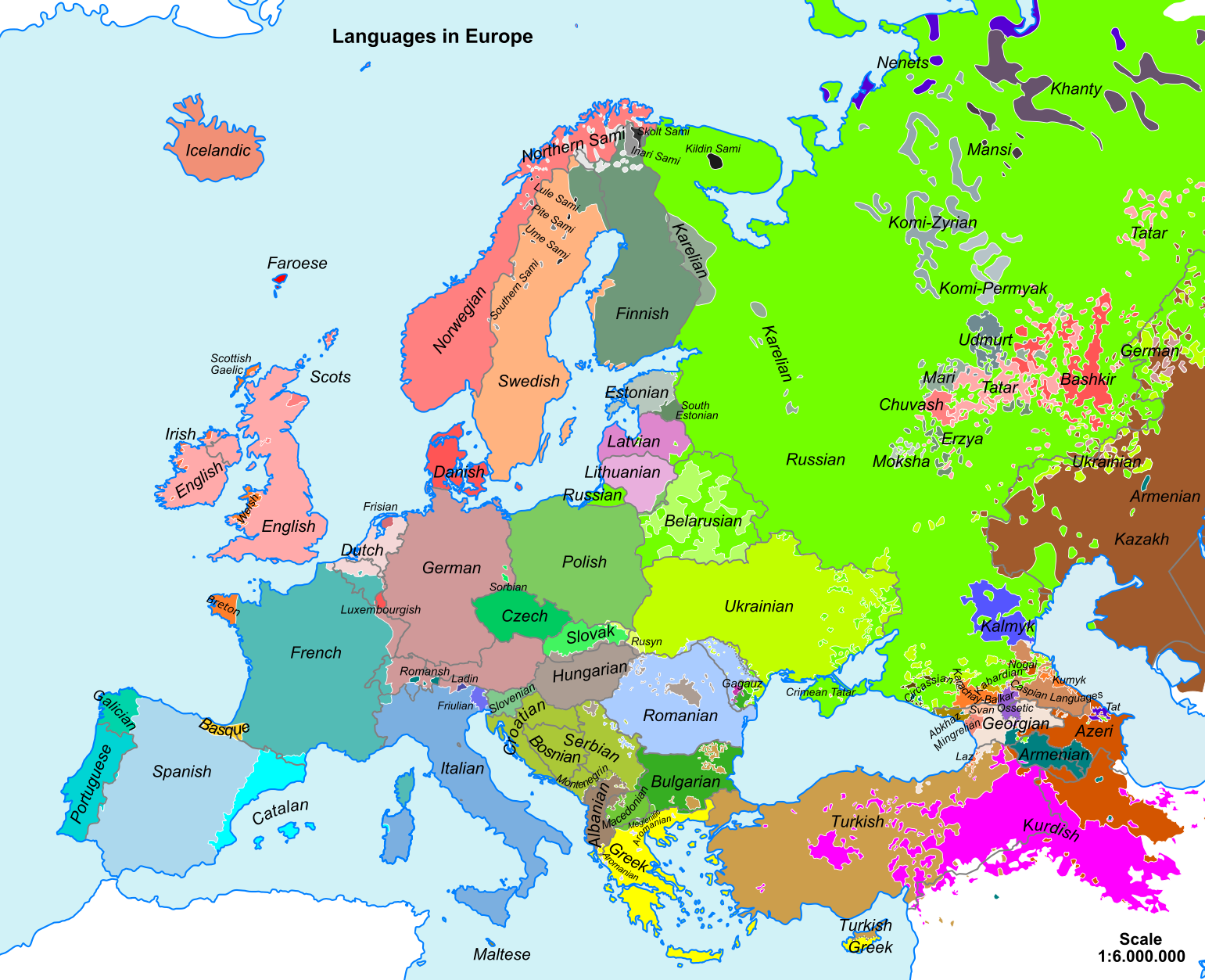
FileSimplified Languages of Europe map.svg Wikimedia Commons
Description. Simplified Languages of Europe map.svg. Map of main European languages simplified by following national borders in many cases. The map does not reflect the fact that many regions are bilingual, officially and/or in practice. In some cases, the area indicated for a language reflects where some of its speakers live but not.
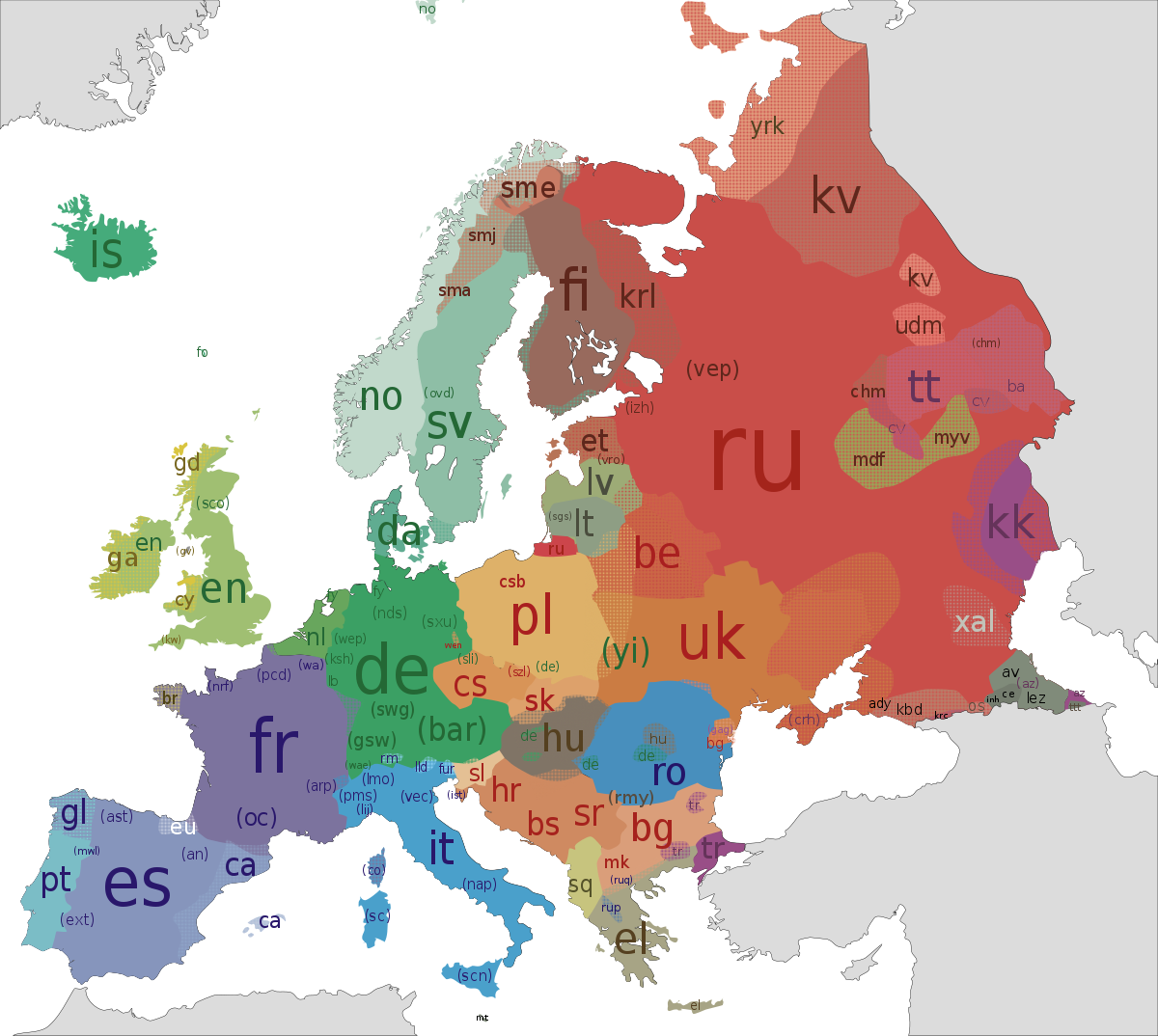
Languages of Europe Wikipedia
There are over 750 million people in Europe, if we assume Europe goes up to the Ural mountains, and down to Georgia, excluding the Asian part of Turkey. About 94% of Europeans speak languages from the enormous "Indo-European" (IE) language family. The "Indo" part shows that it also has an Eastern branch, which includes Hindi and Persian.